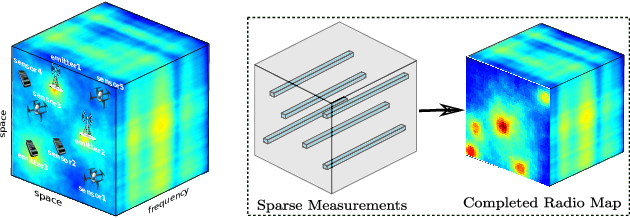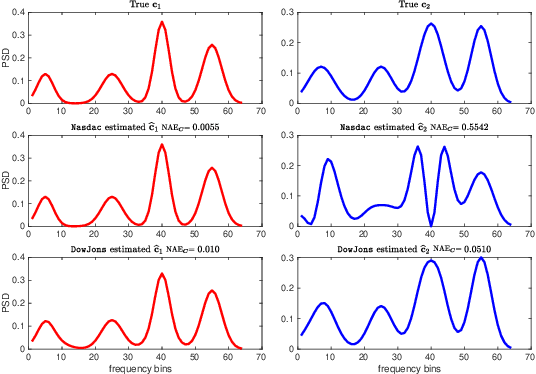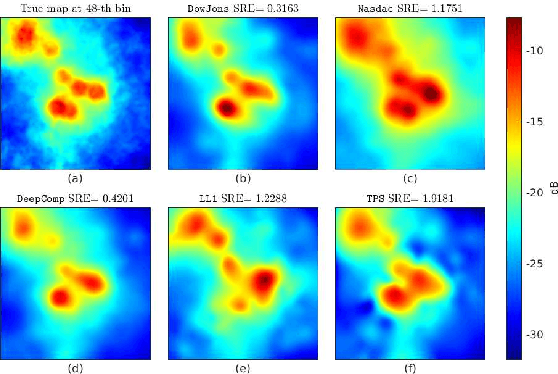Deep Spectrum Cartography: Completing Radio Map Tensors Using Learned Neural Models
Paper and Code
May 01, 2021



The spectrum cartography (SC) technique constructs multi-domain (e.g., frequency, space, and time) radio frequency (RF) maps from limited measurements, which can be viewed as an ill-posed tensor completion problem. Model-based cartography techniques often rely on handcrafted priors (e.g., sparsity, smoothness and low-rank structures) for the completion task. Such priors may be inadequate to capture the essence of complex wireless environments -- especially when severe shadowing happens. To circumvent such challenges, offline-trained deep neural models of radio maps were considered for SC, as deep neural networks (DNNs) are able to "learn" intricate underlying structures from data. However, such deep learning (DL)-based SC approaches encounter serious challenges in both off-line model learning (training) and completion (generalization), possibly because the latent state space for generating the radio maps is prohibitively large. In this work, an emitter radio map disaggregation-based approach is proposed, under which only individual emitters' radio maps are modeled by DNNs. This way, the learning and generalization challenges can both be substantially alleviated. Using the learned DNNs, a fast nonnegative matrix factorization-based two-stage SC method and a performance-enhanced iterative optimization algorithm are proposed. Theoretical aspects -- such as recoverability of the radio tensor, sample complexity, and noise robustness -- under the proposed framework are characterized, and such theoretical properties have been elusive in the context of DL-based radio tensor completion. Experiments using synthetic and real-data from indoor and heavily shadowed environments are employed to showcase the effectiveness of the proposed methods.
 Add to Chrome
Add to Chrome Add to Firefox
Add to Firefox Add to Edge
Add to Edge